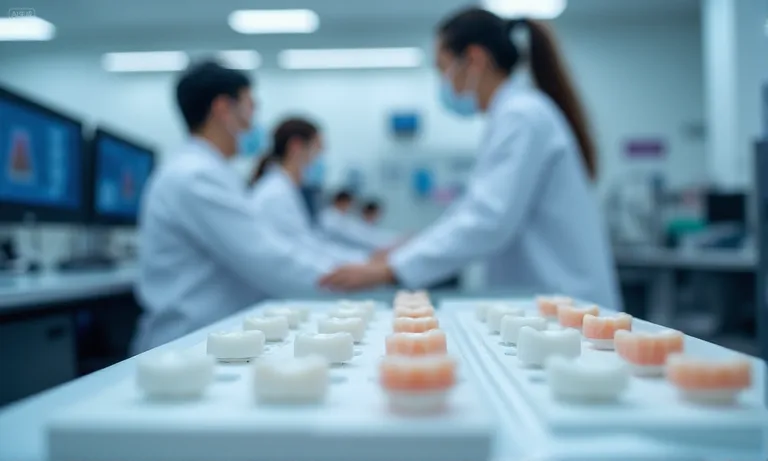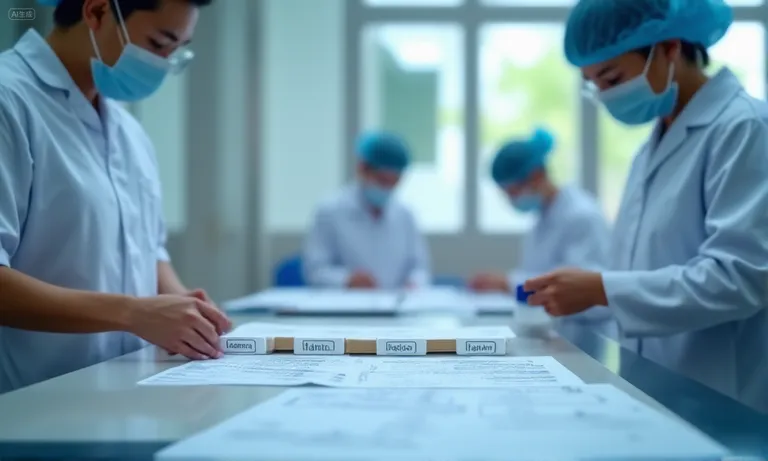Choosing the right OEM dental implant supplier or lab partner is essential for consistent quality, regulatory compliance, and long-term reliability. A truly OEM-capable partner combines engineering expertise, advanced manufacturing, global certifications, and transparent communication to ensure seamless delivery of implant products.
Many practices and distributors struggle with limited production capacity, inconsistent quality, inefficient communication, or compliance risks when outsourcing implant work. These challenges not only delay treatment but also increase costs and damage patient trust.
By evaluating capabilities such as OEM experience, digital workflows, turnkey design-to-delivery services, recognized certifications (ISO 13485, FDA 510k, CE), and reputation signals like references and facility visits, you can identify a reliable overseas dental lab. The outcome is safe, durable implant products, streamlined case management, and a scalable partnership that supports both clinical success and business growth. With the right OEM partner, you gain not just a supplier but a trusted collaborator who adapts to complex cases and safeguards your long-term reputation.
What Capabilities Define a True OEM Dental Lab Partner?
A true OEM dental lab partner is defined not only by advanced equipment but by the ability to connect real-world experience, scalable production, and digital workflows into a repeatable system. For buyers, the key is to identify whether a lab can:
- Prove success with documented implant cases
- Scale from pilot runs to batch production without quality loss
- Integrate CAD/CAM and 3D printing for precision and efficiency
These three pillars separate a general outsourcing vendor from a genuine OEM partner able to support long-term implant supply.

Dental-Lab-OEM-Production-Line
How industry experience and case studies prove OEM readiness
Experience in OEM projects provides practical assurance. For example, when a European distributor requested titanium bases with unique emergence profiles, a lab with prior implant experience adapted its CAD parameters and produced validated samples quickly. Case studies, published references, and repeat orders all serve as verifiable signals that a lab can handle complexity. Buyers should look for evidence such as:
- Documented implant projects across different regions
- Specific outcomes (e.g., reduced turnaround, lower rework rates)
- Willingness to share reference clients or performance data
Why scalable production and turnkey design-to-delivery services matter
Scalability ensures that quality holds steady as volume increases. A capable OEM lab should support a seamless flow from design to delivery. The process often looks like this:
- Digital approval of designs in platforms like 3Shape CAD software
- Automated transfer into milling, 3D printing, and inspection systems
- Final packaging and shipping aligned with client instructions
One overseas dental lab that followed this model cut average lead times by nearly 20%. For procurement teams, turnkey services reduce the risks of miscommunication and allow faster, more consistent supply.
How CAD/CAM and 3D printing workflows ensure precision and efficiency
Digital workflows provide predictable accuracy and compatibility with major implant systems. By integrating CAD/CAM milling and 3D printing, labs can:
- Rapidly prototype and test abutments
- Maintain traceable digital records for compliance
- Achieve consistent margins and fit across batches
This digital backbone minimizes rework, shortens feedback loops, and ensures that precision scales with production demands. For procurement managers, it signals that the lab is investing not just in machines but in a process built for long-term efficiency.
In practice, OEM capability is not defined by equipment alone—it is the combination of experience, scalable systems, and digital integration that makes a lab a reliable partner for sustained implant production.
Which Quality and Compliance Standards Prove an OEM Dental Lab’s Reliability?
The most reliable OEM dental labs prove their credibility through recognized certifications, transparent quality systems, and certified biocompatible materials. These factors not only show compliance with international regulations but also reassure buyers that implant products will meet safety and performance expectations across different markets.

Image
ALT: Dental-Lab-ISO-Certification-Quality-Control
Prompt: A highly realistic, ultra-detailed, professional-quality photo captured in a clean, well-lit environment. Materials must be photorealistic, and rendered with DSLR-level clarity. Lighting should be soft daylight or studio white light. A Chinese dental lab compliance officer checking implant abutments under a microscope, with ISO certificates framed on the wall in the background.
Which certifications (ISO 13485, FDA 510k, CE, DAMAS) validate credibility
Industry certifications provide objective proof of compliance. A reliable OEM lab should hold credentials recognized in target markets:
| Certification | Region / Scope | What It Proves |
|---|---|---|
| ISO 13485 | Global | Quality management system for medical devices |
| FDA 510(k) | United States | Clearance for products to enter U.S. market |
| CE Marking | European Union | Compliance with EU safety and biocompatibility standards |
| DAMAS | UK | Quality and management standards for dental labs |
Labs that share these documents transparently demonstrate that their processes and products meet global safety benchmarks.
How QA processes, inspection protocols, and traceability protect outcomes
Beyond certificates, daily QA execution defines reliability. A structured workflow should look like this:
- Incoming inspection of raw materials with batch records
- In-process checks at milling, sintering, and finishing stages
- Final QC verification using microscopes or scanners before shipment
- Traceable documentation linking each product back to material lot and operator
This stepwise system not only reduces rework but also provides clients with traceable records in case of audits or patient claims.
Why certified materials (zirconia, e.max, titanium) signal biocompatibility and safety
Certified raw materials ensure that implants remain safe and durable once delivered. Buyers should confirm that the lab sources materials from approved suppliers, such as:
- Zirconia: high strength, fracture resistance, suitable for esthetic zones
- Lithium disilicate (e.max): balance of translucency and strength for anterior restorations
- Titanium: proven biocompatibility and stability for implant abutments
When materials come with supplier certificates, buyers can trust that restorations are safe for patient use and compliant with import regulations.
Quality and compliance are not box-ticking exercises. They are proof points that reassure procurement teams of safety, reduce liability risk, and confirm that a lab is prepared for international collaboration at scale.
How to Assess Communication, IP Security, and Service Processes in OEM Projects
Strong OEM partnerships depend as much on secure agreements and efficient service as on production quality. Buyers should evaluate how a dental lab protects intellectual property, how quickly it responds to requests, and how it structures collaboration workflows. These elements prevent disputes, save time, and ensure that projects scale without unnecessary risk.

Dental-Lab-OEM-Communication-Security
How OEM agreements safeguard intellectual property and confidentiality
Written agreements are the foundation of safe OEM collaboration. Non-disclosure agreements (NDAs) and detailed OEM contracts clarify ownership of CAD files, design rights, and manufacturing data. Without clear terms, clients risk having designs reused or shared. A professional lab will proactively propose confidentiality clauses and define liability in case of breaches. This signals maturity and long-term reliability, since most buyers need assurance that sensitive implant data is protected across borders.
Why responsive communication, turnaround time, and problem resolution matter
Communication quality directly affects project efficiency. Buyers should look for labs that can:
- Reply to design questions within 24 hours across time zones
- Provide clear lead-time commitments for prototypes and mass production
- Offer designated contacts for issue escalation
- Share corrective action reports when errors occur
These practices shorten decision cycles, reduce frustration, and help prevent production delays. Many procurement teams rank “response speed” as highly as material quality when selecting partners.
What secure file-sharing and documentation protocols support collaboration
Digital collaboration requires structured file-handling. A reliable OEM partner usually follows a system such as:
- Encrypted file transfer platforms (instead of open email attachments)
- Version control so that only the latest CAD design is used for production
- Audit logs to track when and by whom files were accessed
- Archived records linked to each order for easy retrieval during audits
These steps not only protect sensitive implant data but also create transparency, which helps build trust in cross-border projects.
OEM projects succeed when confidentiality, communication, and collaboration tools are taken as seriously as technical output. For overseas dental labs, these service dimensions often determine whether partnerships remain smooth and scalable over the long term.
How to Use Reputation and References to Confirm an OEM Partner’s Reliability
Before signing long-term OEM agreements, procurement teams often look beyond technical brochures and certifications. Reputation and references provide external validation of a lab’s claims, helping buyers reduce risk and gain confidence. Three common methods—reviews, references, and visits—offer practical ways to verify an OEM dental lab’s reliability.

Dental-Lab-OEM-Reputation-Review
Why online reviews and peer recommendations reduce supplier risk
Digital platforms and peer networks allow buyers to gather independent feedback before committing. Key points to check include:
- Ratings and testimonials on B2B marketplaces or professional forums
- Recommendations from peer clinics or distributors who share their direct experiences
- Consistency of comments across multiple sources (positive or negative)
These references help filter out suppliers that overpromise but underdeliver, especially in overseas markets where initial due diligence can be harder.
How customer references and published case studies validate performance
Direct references provide stronger assurance than anonymous reviews. For example, one OEM dental lab working with an Australian distributor published a case study detailing how it reduced abutment rework rates by 15% through CAD/CAM adjustments. Such references prove not just technical ability but also responsiveness to client needs. Procurement managers should request:
- Named reference clients (with permission)
- Documented case studies that include baseline issues and measurable results
- Evidence of repeat orders or long-term collaboration
These stories show how a lab performs under real conditions, which is more convincing than certifications alone.
Why lab visits and facility inspections provide added assurance
Nothing replaces an on-site evaluation. A structured visit typically includes:
- Touring production areas to observe cleanliness, workflow, and staff expertise
- Reviewing QA checkpoints at milling, finishing, and packaging stages
- Meeting management teams to assess communication culture
- Confirming equipment and digital workflow integration firsthand
This step-by-step inspection gives procurement teams confidence that daily operations match the lab’s claims. Many buyers report that lab visits uncover strengths—or gaps—that documents alone cannot reveal.
Reputation is ultimately built on trust earned over time. By combining online reviews, client references, and facility visits, procurement teams close the loop on due diligence, ensuring that an OEM dental lab can truly deliver what it promises.
Which Procurement and Logistics Factors Define a Scalable OEM Dental Partnership?
Even the best technical capabilities mean little without reliable procurement and logistics systems. Scalable OEM dental partnerships are defined by how well a lab standardizes its order workflow, manages shipping across borders, and sustains long-term cooperation mechanisms. These factors determine whether daily operations remain smooth as order volumes increase.

Dental-Lab-Logistics-Shipping
How standardized order workflows streamline submission and quoting
A consistent workflow ensures that order intake and quoting remain accurate even at higher volumes. The process usually follows a clear sequence:
- Digital file submission through a standardized online portal or secure email
- Automated confirmation of design compatibility and implant system requirements
- Transparent quoting with lead times and costs clearly itemized
- Order tracking updates provided throughout production and delivery
This stepwise approach reduces miscommunication and shortens turnaround, giving procurement managers predictable timelines for planning.
Why logistics efficiency, shipping, and customs handling impact delivery
Efficient logistics are critical for international OEM supply. Buyers should check whether a lab can:
- Provide multiple courier options (e.g., DHL, FedEx) to balance speed and cost
- Handle customs documentation accurately to avoid clearance delays
- Offer packaging compliant with international standards for implant products
- Maintain inventory buffers to mitigate disruptions
Smooth logistics prevent costly chairside delays and ensure that recurring orders arrive on time, regardless of customs complexity.
How long-term cooperation mechanisms sustain recurring implant product supply
True scalability goes beyond single orders. Successful OEM dental partnerships often include frameworks such as quarterly business reviews, forecast sharing, or fixed supply agreements. For example, one overseas dental lab worked with a U.S. distributor to align monthly forecasts with production capacity, reducing urgent orders by 30% within six months. These mechanisms create trust, stabilize costs, and ensure that both sides can plan strategically rather than reactively.
Procurement and logistics are the backbone of scalable OEM collaboration. Standardized workflows, efficient shipping, and long-term agreements transform a transactional supplier relationship into a dependable partnership capable of growing with demand.
Conclusion
Choosing the right OEM dental implant partner is about more than equipment or pricing—it requires proven capabilities, compliance, clear communication, strong reputation, and scalable logistics. When these elements align, procurement teams gain confidence that quality and timelines will hold steady as volumes grow. Working with an overseas dental lab that integrates digital workflows, transparent QA systems, and reliable shipping networks ensures that implant products are delivered safely, consistently, and at scale. In the end, the most reliable partnerships are built on trust, measurable performance, and a shared commitment to long-term growth.


